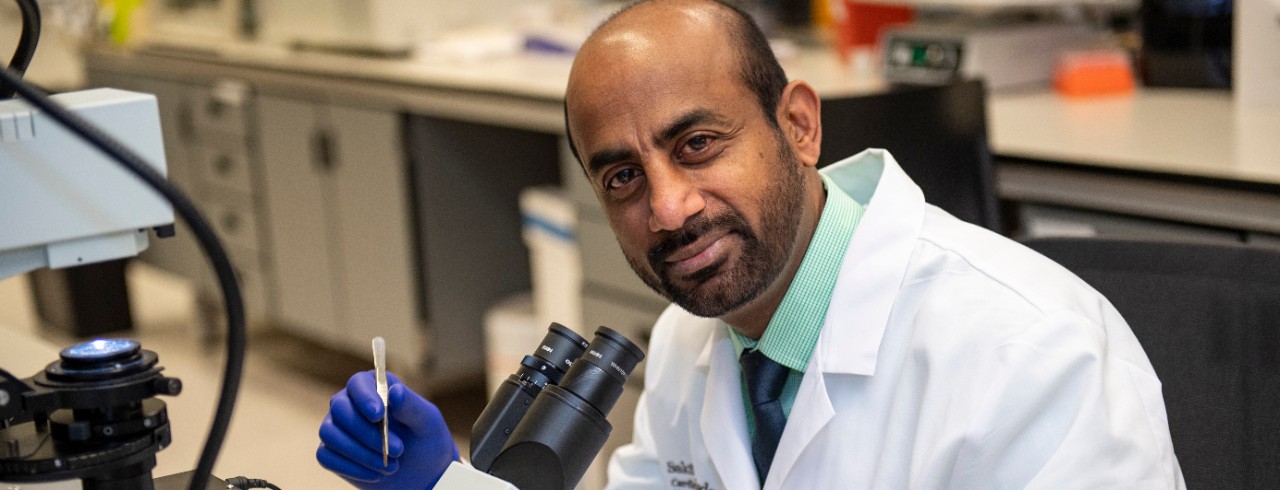Cardiovascular
Sadayappan named executive director of the Center for Cardiovascular Research
Sadayappan notes that College of Medicine faculty currently hold 38 grants from the National Heart, Lung and Blood Institute to conduct various aspects of cardiovascular research. He sees that number quickly growing, in addition to increasing the number of federal training grants for young investigators. The College of Medicine currently holds two National Institutes of Health (NIH) cardiovascular training grants.
“Historically, the College of Medicine is known as a hub for cardiovascular research. I originally came to Cincinnati Children’s in 2002 as a postdoc because this is the place for cardiovascular research. Between UC and Cincinnati Children’s, we have significant NIH funding and excellent clinical research programs,” Sadayappan says. “My purpose is to connect all cardiovascular research activities at UC under one umbrella. We will focus on team science. My job will be to connect all of the researchers and go for big ideas and better outcomes. The focus will be for larger grants so that we can really build a strong program.”
The CCR’s primary objective is the development of groundbreaking collaborative research programs for complex cardiovascular diseases by systematic integration of basic and translational studies, along with training across disciplines, departments and other institutions, both national and international. The CCR will integrate research programs that focus on basic and translational research to advance bench-to-bedside patient care and personalized medicine and emphasize interdisciplinary studies within a collaborative framework. Through broadly tailored research programs, Sadayappan will organize, coordinate and unify cardiovascular experts toward advancing the Center’s mission.
The CCR will work closely with College of Medicine faculty members, as well as institutes and centers, such as the UC Gardner Neuroscience Institute, University of Cincinnati Cancer Center, Cincinnati Children’s Heart Institute, and members of the Cincinnati Chapter of the American Heart Association. Additionally, the CCR may expand its collaboration with local hospitals to support the UC Heart Bank and clinical studies.
Sadayappan expects the CCR to initially have at least 35 faculty as members. While most center members will be faculty from the College of Medicine, including at Cincinnati Children’s, others will be UC faculty from the James L. Winkle College of Pharmacy, the Biomedical Engineering Program at the College of Engineering and Applied Science and the Department of Biological Sciences at the College of Arts and Sciences, in addition to other UC colleges.
Sadayappan says he plans to build upon four primary areas of cardiovascular research strength at UC: myocardial infarction, cardiac fibrosis, cardiac inflammation and genetic heart disease. Additionally, he expects to broadly incorporate artificial intelligence into the program to expand drug discovery and treatment options and to better understand molecular mechanisms.
Sadayappan, who had led the heart branch of the former UC Heart, Lung and Vascular Institute (UCHLVI), adds that the CCR will be focused exclusively on cardiovascular research unlike the UCHLVI, which had a broader emphasis that included pulmonary systems and vascular disease.
An internationally respected investigator, Sadayappan’s research focuses on muscle biology emphasizing the underlying physiological and pathophysiological pathways in cardiovascular health and disease. He has built his research program around the goal of improving health outcomes and preventing muscle disease. His research team is currently using small molecules and gene therapies to treat hypertrophic cardiomyopathy, skeletal myopathies, smooth muscle myopathy, inflammation and distal arthrogryposis in cardiovascular, cancer toxicity and neuro-junctional diseases. In addition to his basic research, he also conducts collaborative, population-based clinical studies related to genome-phenome analysis in the South Asian community within the United States.
Currently, Sadayappan serves as a committee member for the American Heart Association (AHA) Basic Cardiovascular Sciences Executive Council, International Society for Heart Research and the AHA Scientific Session Organizational Committee. He is president of the Cardiac Muscle Society and Society for South Asian Heart Research and. serves as a board member of the local Cincinnati branch of the AHA.
Sadayappan received his doctorate in biochemistry from Madurai Kamaraj University in Madurai, India. He was a postdoctoral research fellow at the Max-Planck Institute in Germany and then a postdoctoral fellow, research associate and research instructor at Cincinnati Children’s. Before joining the UC College of Medicine faculty, he was an associate professor and director of the Heart Failure Program, Cardiovascular Research Institute at Loyola University in Chicago.
Lead photo/Colleen Kelley/UC Marketing + Brand

